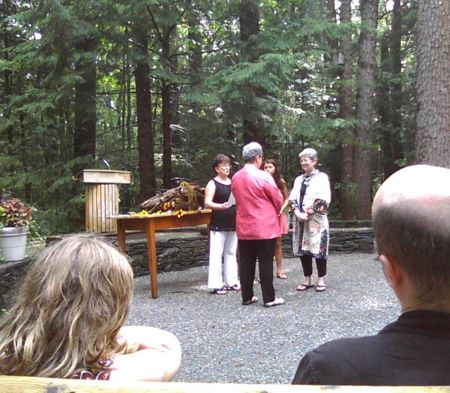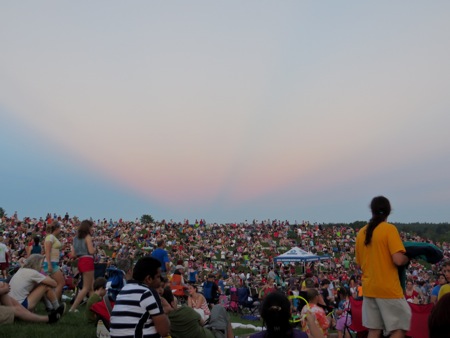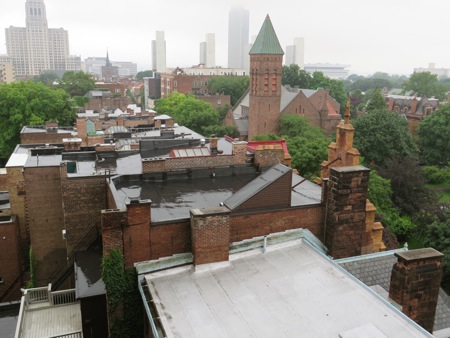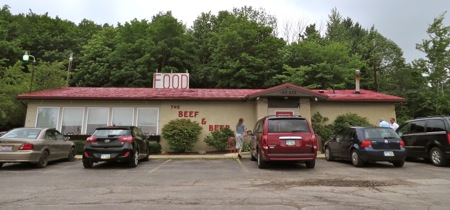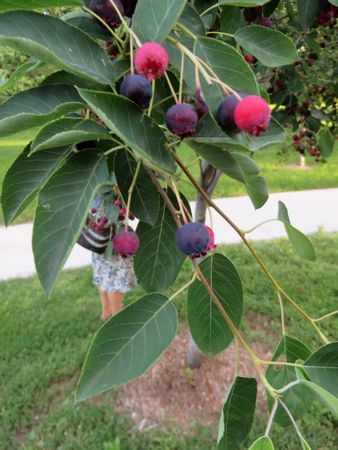We left the house of Carol’s dad and his wife at about half past nine this morning, and started driving west. We drove down Interstate 495 to 290 to 90, through the hills of central Massachusetts. I lived most of my life in relatively flat eastern Massachusetts, where small hills rarely rise more than a couple of hundred feet above the general level of the land, where the rivers may take several miles to drop a few feet, where eskers rise up out of swamps. Stow is a few miles to the west of where I grew up, on the edge of the central Massachusetts hills. This part of Massachusetts was settled in the mid-eighteenth century, reached a peak in population half a century later, and in some areas is still less populous than it was in the nineteenth century. The soil is relatively poor and as soon as the rich land west of the Hudson River opened up, people began to leave central Massachusetts. When I did some supply preaching in north central Massachusetts a decade ago, it was hard to find a full-time job, and the great hope of economic salvation was that the commuter rail would extend out far enough that people could commute to the great economic engine that is Boston; the commuter rail never got extended, and I have little doubt that the Great Recession made things worse, not better.
Nevertheless, the tree-covered rolling hills, dotted with crooked roads and clapboard houses, are beautiful; a subtle beauty equal to the dramatic beauty of the California coast. On a hot summer day like today, I think the central Massachusetts hills are more beautiful: the moist air makes distant hills look blue, giving a delightful sense of distance; and the wet spring has made all the vegetation incredibly green.
We climbed up through the Berkshires, reaching an elevation of 1,724 feet; we will not reach that elevation again until we get to Hamilton County, Nebraska. Hamilton County, with a total area of 547 square miles, has a total population of fewer than 10,000 people; Berkshire County, with an area of 947 square miles, has a total year-round population of over 130,000, and a summer population higher than that.
As we drive through New York state, I read aloud to Carol from the newspaper coverage of the aftermath of the acquittal of George Zimmerman in the killing of Trayvon Martin. Neither of us was surprised that Zimmerman was acquitted. Carol wondered how the prosecutors allowed a jury to be seated that had no black people; I wondered how Florida could be so stupid as to have a law on the books that basically legalizes murder. I read aloud a quote in the newspaper story that captured something else I was thinking: if Zimmerman had been black and Martin had been white, odds are pretty good that the outcome of the trial could have been different.
After a boring, uneventful drive, we arrived in Fredonia, New York, at about half past six. It was still hot and humid, but we immediately went for a walk so we could stretch our legs. A block or two from our hotel, we came to small cemetery. A plaque facing the street read:
“The Pioneer Cemetery, Town of Pomfret. This site was given by Hezekiah Barker for a cemetery and the first burial here was in 1807. There are 15 known Revolutionary soldiers and many other earlier settlers of Pomfret resting here in this pioneer cemetery. This marker placed by the Pomfret Town Board — 1977. Elizabeth L. Crocker — Town Historian.”
I would not be surprised if at least some of the people buried in this cemetery were originally form the central hills of Massachusetts. I could not find any of the older grave stones that were still legible, though there were a number of old slate stones that were broken or shattered by frost and moisture. Most of the stones that were legible were less interesting mid- to late nineteenth century stones. But I did find one attractive stone, obviously hand-lettered, lying flat on the ground where it had fallen long ago:

The inscription, as near as I could make it out, reads: “In memory / Lucyett Smith / Who Died July 16th, 1846 / Age 19 years 3 Months & 1 day.”

